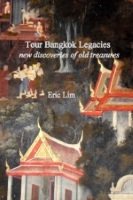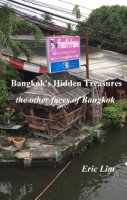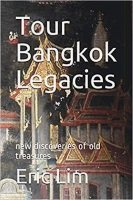- Home
- Bangkok Museums
- History of Thai Currency
The history of Thai currency
from ancient beads to modern baht
By Eric Lim
The history of Thai currency traces the evolution of the medium of exchange used in Thailand prior to the 1st century. This dates from the days of barter trade, ancient beads and money in various shapes and sizes till the currency in modern times.
Ancient beads, seeds, bracelets and pebbles used as a medium of exchange in the early days around 200 – 300 BC, have been discovered in Thailand, including old Roman copper coins dating back to 270 BC!
Coins from the early kingdoms
During the 1st – 7th centuries, metallic coins of the Funan Kingdom in Indochina made their appearance in Thailand, followed by Dvaravati coins in the 7th – 11th centuries.
This was followed by a period in the history of Thai currency when money in different shapes and sizes from various places were in use.
Sandal wood flower coins or Dok Jan coins from the Sri Vijaya kingdom in SE Asia were introduced in trade in the region in the 8th – 13th centuries.
Cowrie shells and baked clay coins were also used from the pre-Sukhothai era until the reign of King Rama IV, after which they dropped from circulation.
From the 14th – 19th centuries, coins from the Lanna Kingdom in the northern Thailand embossed with various designs were also in circulation.
Around the same period, 15th – 19th centuries, Lanchang, the kingdom in northeastern Thailand introduced silver and copper money in long and narrow boat shapes.
Pot Duang or bullet money
In the history of Thai currency, the money that was most enduring was Pot Duang or bullet money.
This first appeared during the Sukhothai period, (13th – 14th centuries.) Pot Duang money were hand-made coins. Metal strips were bent and folded into spheres very much like a bullet, thus the name, bullet money.
Bullet money was in circulation for 600 years from the Sukhothai era to Rattanakosin until its withdrawal from circulation in 1904 during the reign of King Rama V.
Minted coins and printed bank notes
The most profound changes in the history of Thai currency occurred during the Rattankosin era in the reigns of King Rama IV and King Rama V.
Standardized factory minted coins and bank notes were officially issued.
During the reign of King Rama IV, when foreign trade and diplomatic relations expanded, paper money, in the form of royal promissory notes, was issued in 1853.
These were followed by bank notes issued by the foreign banks to facilitate trade clearance.
In 1857, Queen Victoria of Britain presented Thailand with the first minting machine and the minting of the first Thai silver coins commenced. In 1858, a minting machine was purchased from Britain set up the Royal Mint in the Grand Palace. The minting of coins went ahead full steam.
In the reign of King Rama IV, money was denominated in satang, tho, phi, padueng and baht.
The modern baht
During the reign of King Rama V, or King Chulalongkorn, coinage was streamlined. The numerous denominations were reduced to only two, satang and baht, based on the metric system, which remain till this day.
Bank notes issued were in denominations of 1, 5, 10, 40,80, 100, 400 and 800 baht.
Today, the denominations have been streamlined to 25, 50 satang coins, 1, 2, 5, 10 baht coins and 20, 50, 100, 500, 1,000 baht notes.
The history of Thai currency goes back more than 1,000 years, evolving from ancient beads and bracelets to the modern baht that's in current use.
The old Thai currency can be viewed at the Bank of Thailand Museum.
To return to Bangkok Museums.
Related page
Bangkok’s Hidden Treasures – the other faces of Bangkok
This is my third e-book which is a journal on my travels in Bangkok from late 2011 to early 2018. It’s a journey to the less traveled and lesser-known places in Bangkok, places that are treasure troves of history, art and culture of the diverse communities that make up Bangkok and Thailand.
This journey will take us from the rice fields of Nong Chok near the eastern city limits of Bangkok across the city to the canals in Thawi Wattana in the west.
Let's uncover these gems in Bangkok's hidden treasures together.
Search Tour Bangkok Legacies with DuckDuckGo
Related page
Tour Bangkok Legacies
new discoveries of old treasures
My Kindle edition

My Smashwords edition






